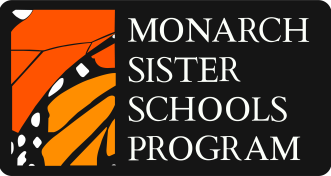
By Mary Anne Rishebarger & Sandy Macias
I was born in Toronto, Canada and moved to Maryland, USA when I was in the second grade. I still enjoy visiting my cousins in Canada as often as possible. When I was a child, I remember seeing lots of butterflies, but I don’t see more than one or two at a time now.
My journey with the Monarch Sister Schools program began in 2009 when we found a small patch of asclepias syriaca, “common milkweed” growing near the elementary school my children attended. I am a member of the Rotary Club and knew we were beginning to support environmental projects. I heard that monarchs were in decline due to habitat loss, mainly from pesticide use destroying the host plant milkweed. I asked my Rotary Club members if they would like to help me build a monarch butterfly garden/outdoor learning space at the school. They agreed, so we purchased all the native milkweeds and native nectar perennial plants and added them to the area which already had milkweed returning each year. The teachers attended a monarch workshop and began raising monarchs in the classroom with all the students.
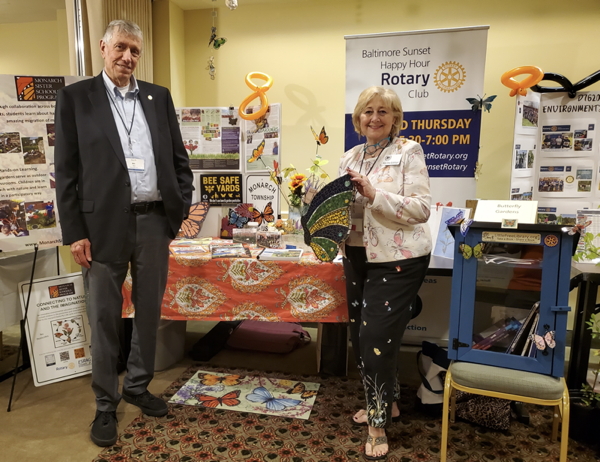
I enjoyed planting additional gardens in Baltimore City until one day, I asked the founder, William Dent, also a Rotarian, if I could work full time for the Monarch Sister Schools organization. In my first year as the Program Director, we planted over 30 gardens in schools, retirement homes, and communities. We even planted a few in other states. We are planting gardens now and will continue through the summer. We want every student in each school to have the opportunity to raise monarchs while learning science in the classroom when school begins each September. That is when the monarchs will be migrating through Maryland, where I live.
About Monarch Butterflies
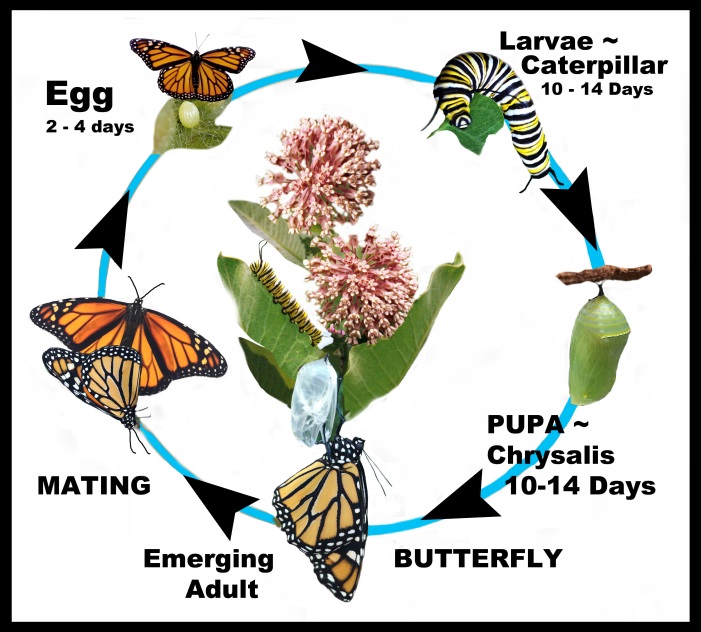
The iconic female monarch butterfly lays hundreds of eggs only on milkweed plants. She usually lays one egg per plant under a leaf. It is magical to watch her land on a leaf, swing her abdomen under the leaf and place an egg. In two to four days a caterpillar will emerge, turn around and eat its shell. Then it will eat only milkweed leaves for the next 10 – 14 days as it sheds its skin several times before forming a silk button and hanging upside down in the form of a letter J. Within a day it sheds its skin one last time and forms a chrysalis. In the next 10 – 14 days, the chrysalis will turn clear and you can see the beautiful butterfly wings inside. The chrysalis cracks open, and out flops the butterfly that hangs on for a few hours until blood fills its wings and it is dry enough to fly.
Each butterfly will only live about 30 days, long enough to mate, lay eggs and travel a portion of the 2,500 mile migration between Canada and USA. However, the last generation each year, lives six months and migrates all the way to its winter habitat in the Oyamel fir forest of Central Mexico.
The Monarch Sister Schools program currently has schools who participate in the United States and Mexico. Schools in the US restore habitat by planting gardens. Schools in Mexico restore habitat with gardens and tree nurseries.
Canadian Schools Needed!
We are looking for schools in Canada who want to help the monarchs with habitat restoration and migration. There is a cultural exchange portion of our program where students draw pictures, write pen pal letters and talk to each other via Zoom about their environmental work, beginning with monarchs and expanding as far as the student’s imaginations take them.
If we can teach students to care for our pollinators and the planet, they will educate others and save the world. One butterfly at a time, one idea at a time, one project at a time! There is much to do, so let’s listen to the voices of our students and protect our planet and all living creatures.
To learn more about butterflies, look for these great books by Carol Pasternak: How to Raise Monarch Butterflies: A Step-by-Step Guide for Kids and 5 Butterflies.
Mary Anne Rishebarger, Program Director, Monarch Sister Schools
A School Librarian’s Monarch Sister Schools Story
Students at the Canadian School in Guadalajara, Mexico have been very active in our school’s Garden Club which is filled with over 100 mature tropical milkweed plants. Their journey began five years ago when we were given an asclepias curassavica as an addition to the school garden. It was dry and needed much love and attention.

Once I knew this was a special butterfly plant, I knew I had to learn more about it. I quickly searched our library catalog for all of our library books about monarchs, and surprisingly learned more about the recent demise in the monarch butterfly population. It was then when I realized that we could make a big difference in the world. I could teach our students all about the importance of giving back to nature just like the character Miss Rumphius in Barbara Cooney’s storybook! We had read the book earlier in the year and that sparked an idea in my mind. We too, could begin our journey to plant milkweed instead of lupines!
The children eagerly watered and tended to our school garden during their lunch breaks and quickly learned all about dedication to Mother Nature and quickly saw the fruits of their work. Our garden was growing!
Soon plants as little as six inches were being bombarded with monarch eggs in April, as the monarchs returned to the United States and Canada. Students learned how to recognize them and retrieve leaves safely. Baby caterpillars were being found, and all sizes were being collected and raised in the library!
It is a common sight for the children to experience the butterflies fluttering by as they are playing with friends or listening to a story outside under a big shade tree. The butterflies are seen as welcomed guests in their country and are greatly appreciated by students and teachers who admire nature around them.
Hands-On Learning in the Butterfly Garden
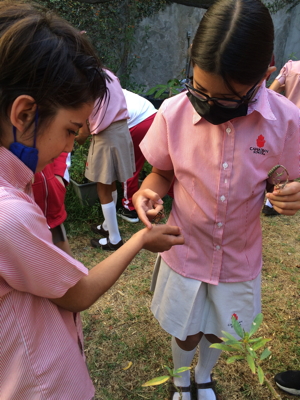
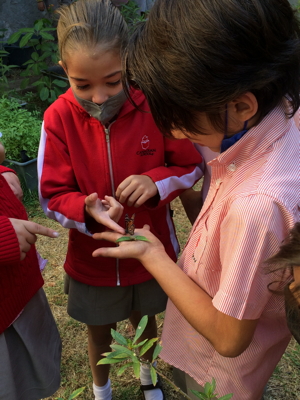
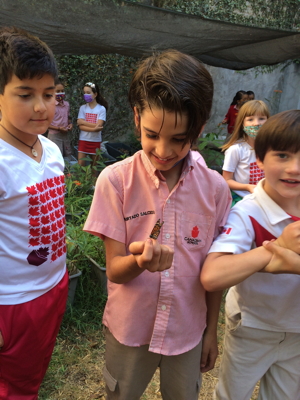
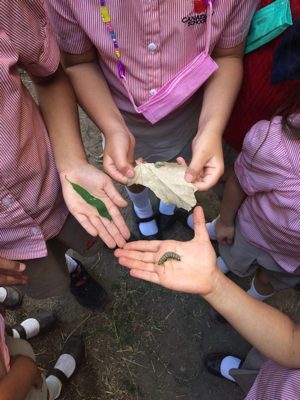
This metamorphosis is part of our science curriculum and ties right into our migration units too. There are so many ways that we can tie them into our educational learning experience at Canadian School.
I also love the fact that students are very knowledgeable about searching for information in books from our well-stocked library. They can learn everything about anything they want to!
After a long wait for a caterpillar egg to metamorphosize, students are often heard chanting out, ”We wish you well” to yet another beautiful monarch butterfly that they lovingly helped along the way. This brings joy to all of us who were a part of this butterfly’s short time with us and we wouldn’t have it any other way! We are close to releasing 600 butterflies now!
Sandy Macias, Teacher-Librarian
Canadian School is Alberta accredited and is located in beautiful Guadalajara, Mexico, where it has served our community since 2011 with a superb educational experience to our students.
How Your School Can Get Involved
The Monarch Sister Schools program is seeking Canadian schools to participate in this wonderful project.
For more information about the program, visit the website at: www.monarchsisterschools.org
You can also contact the program director at: MaryAnne@MonarchSisterSchools.org or by phone at 410-599-2860.
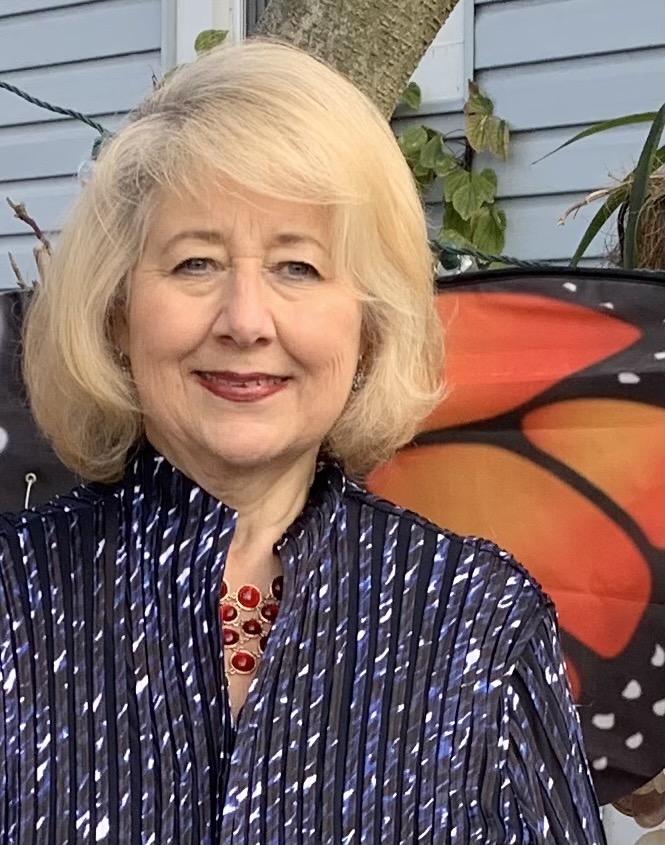
Mary Anne Rishebarger is the program director for the Monarch Sister Schools program. She was born in Toronto Canada, and moved to Suitland, MD (just outside Washington, DC) in elementary school. She has lived and worked in the USA, London, UK, Interlaken, and Switzerland. With her daughter, Mary Anne was instrumental in building a gravity powered water treatment facility in Atima, Honduras as a volunteer Rotarian. She has held various leadership roles in Rotary International for over 20 years. Mary Anne enjoys gardening and saving monarchs and all our pollinators.

Sandra Lynn Macias is a native of California, and has worked in education for 31 years. In 2012 Sandy was invited to open a brand new library at Guadalajara’s Canadian School, where she also coordinates the school’s garden. The garden and the library are both places of wonder for the school’s students. “I cordially invite all students to try and think of a wonderful idea that they too can do to make this world a more beautiful place. As school librarian, it brings me joy to know that I am instilling ideas in my students.”
